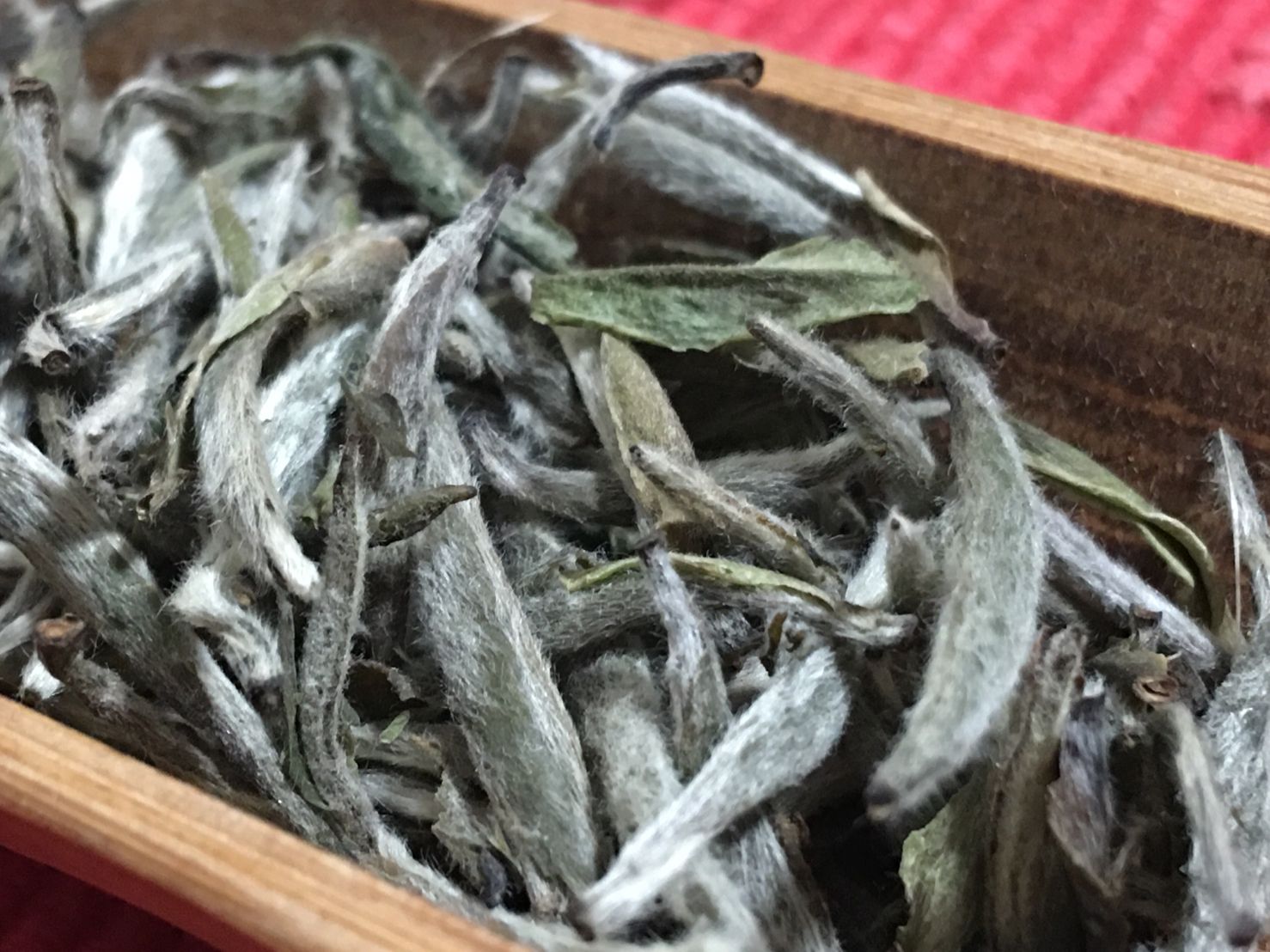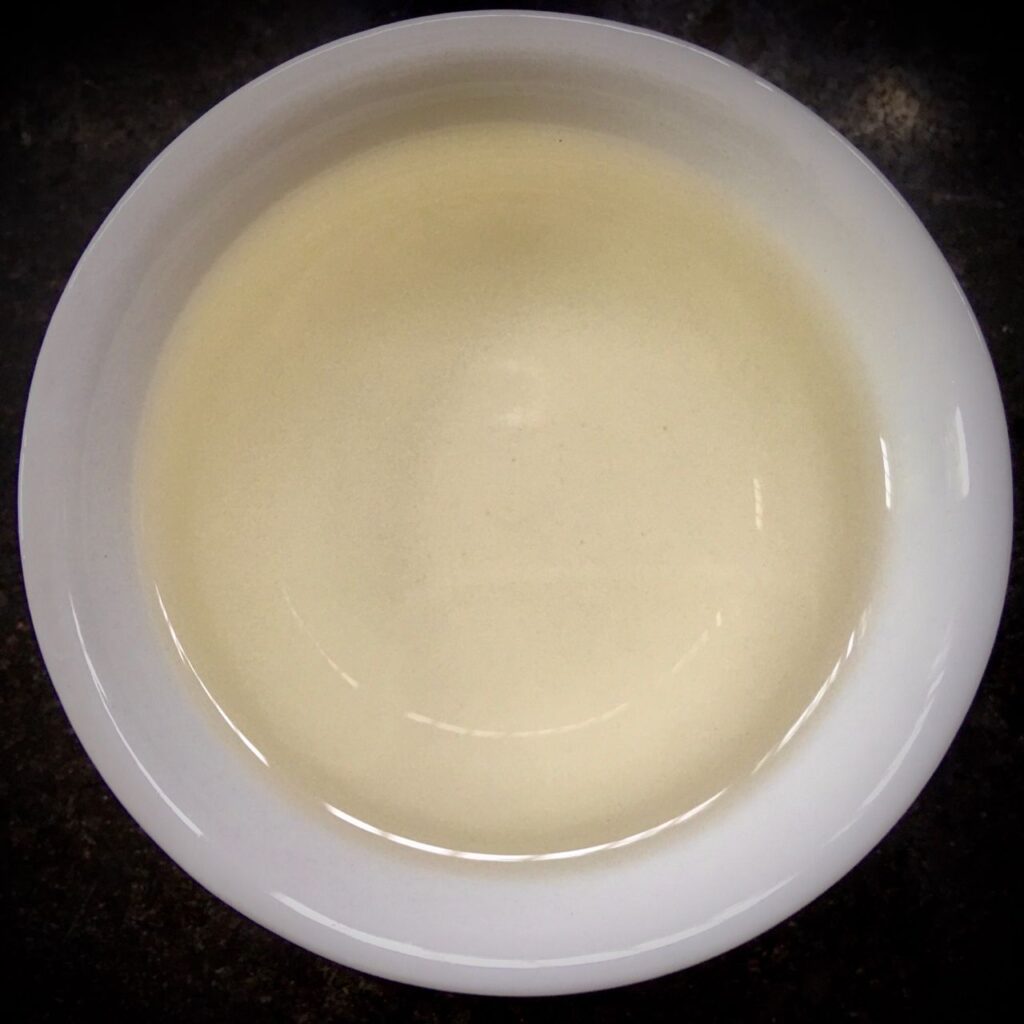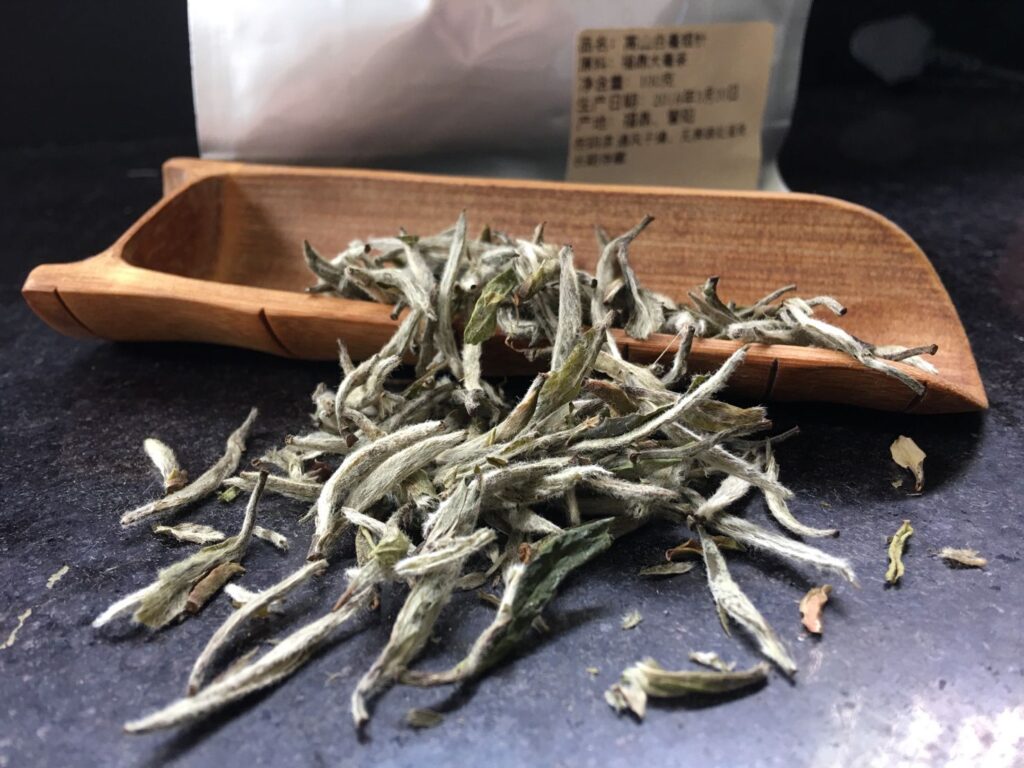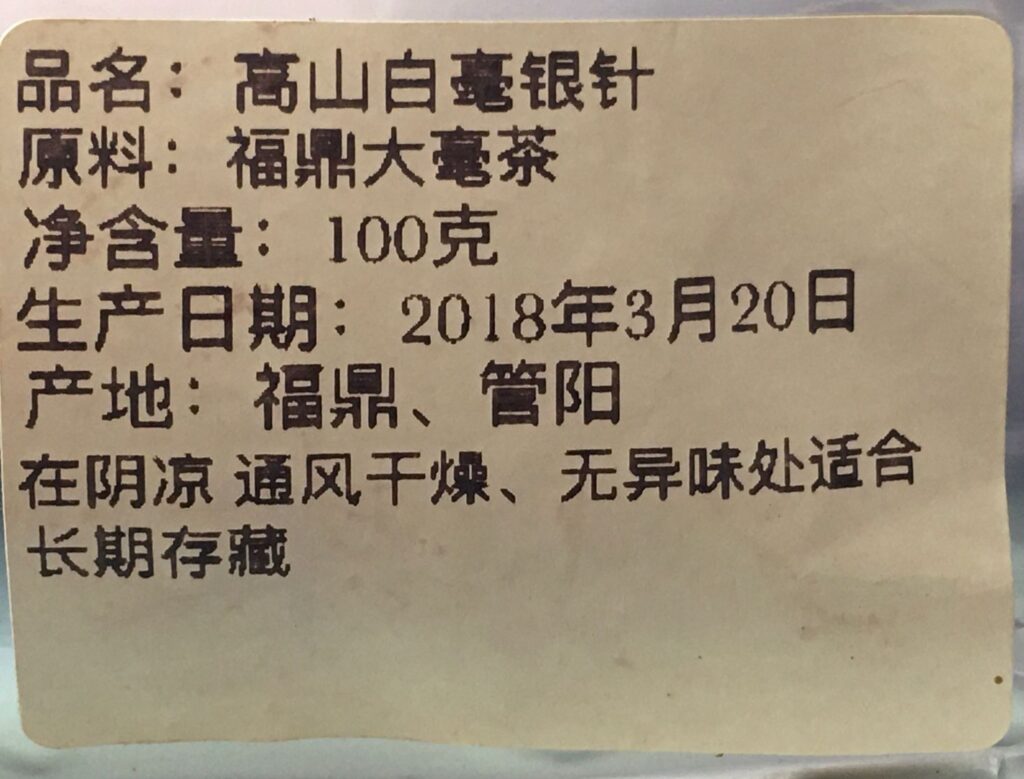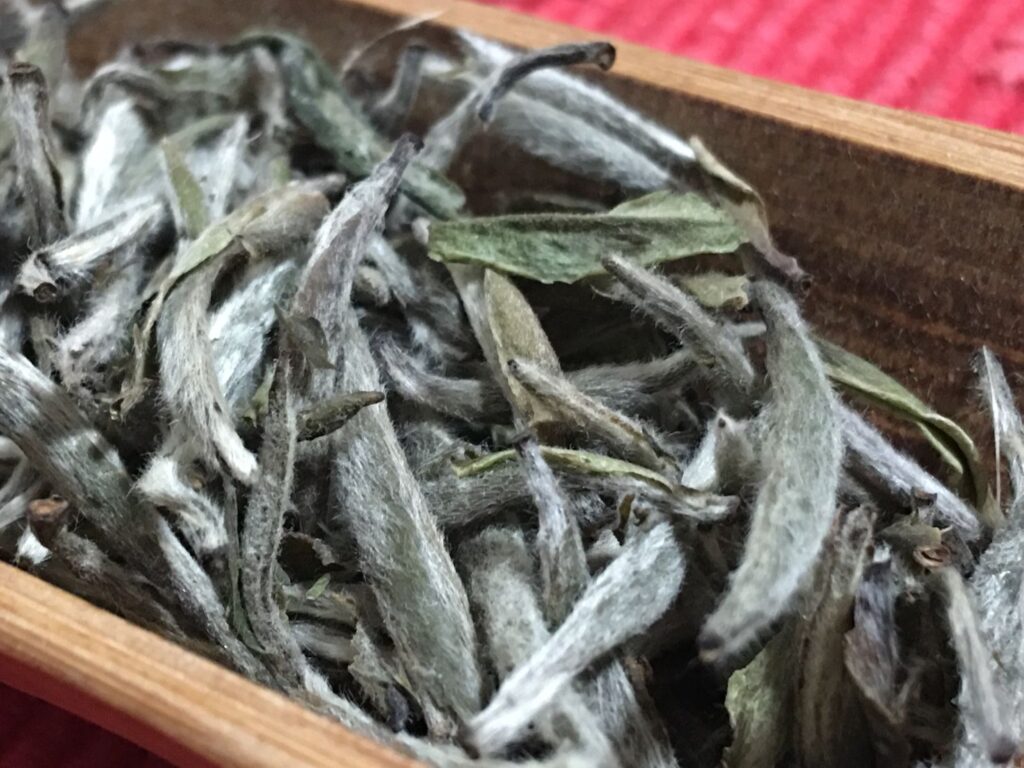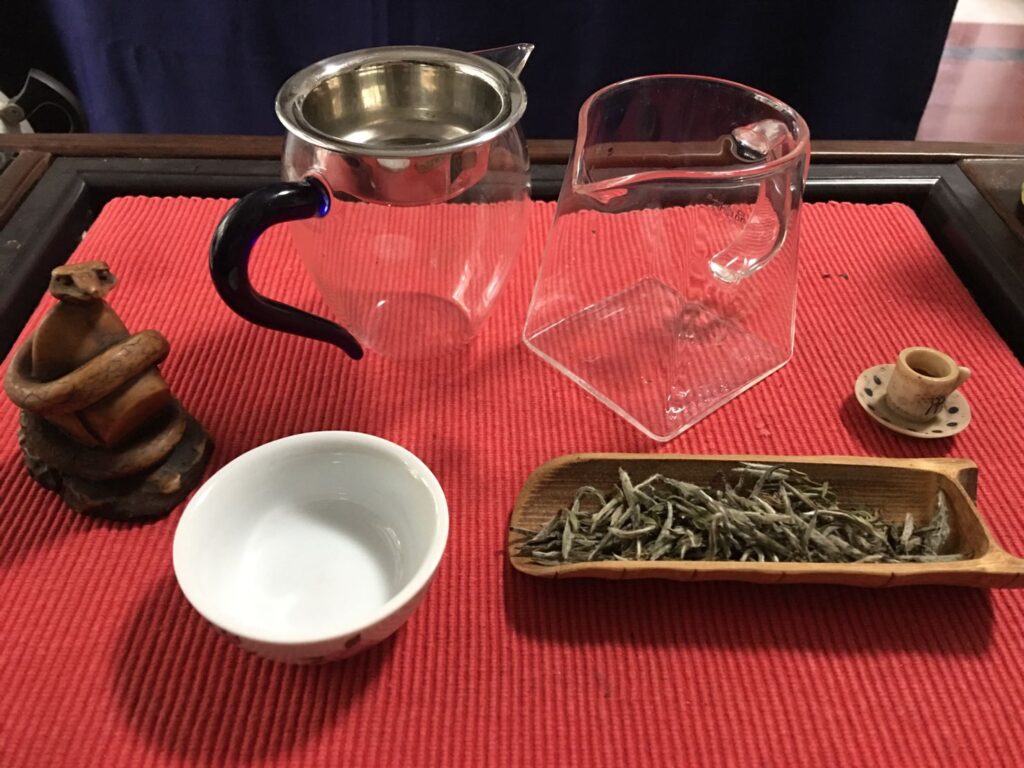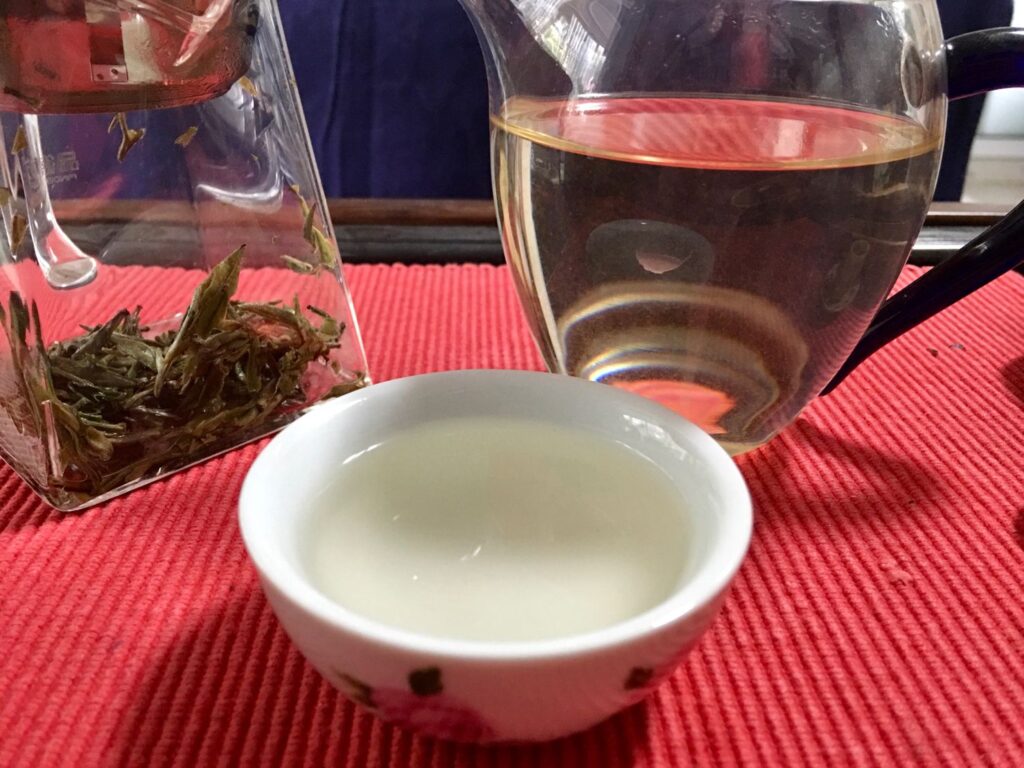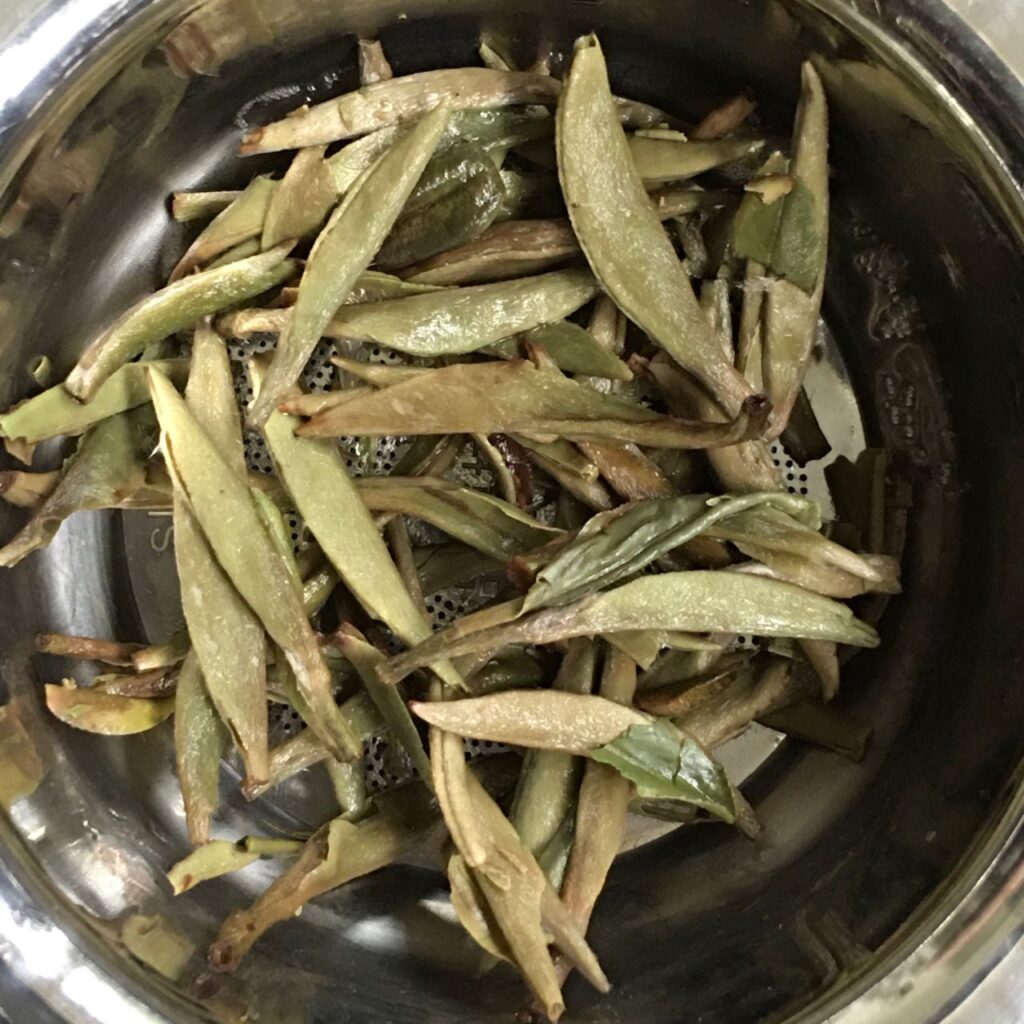Gāoshān Báiháo Yínzhēn Chá, 高山白毫银针, High Mountain Silver Needle White Tea
Spring, 2018; C. sinensis var. Dàbái; elev. unknown, Fuding, Guanyang, Fujian; young buds: one flag-one spear, pre-Qingming, white tea process; #TodaysTea, #今天的茶, #JīnTiāndeChá#Tea, #茶, #Chá.
The dry leaves appear to be thick, fat, sage green, closed buds with silver hairs all over, and have an earthy, biscuit like scent, with a hint of charcoal; when wet the leaves become more ore less uniformly green with occasional yellow hints whilst they have a notably sharp, and mild acrid like wet ash aroma.
The brewed tea, which was steeped with 4g of tea in 50ml of water for 10sec.@80deg. C then a further 100ml of water was added for 60sec.@80deg. C.; has a white pear to pale yellow colour, accompanied by a mild buttery aroma. In the mouth it has a creamy, milky texture, is slightly thin and watery on the sides of the tongue, with hints of pepper, and a subtly metallic sensation, followed by a lingering sweet finish.The taste precedes from being full, creamy, mildly buttery with floral notes on swallowing, followed by an earthy, metallic, mouthwatering drift into a long, sweet aftertaste and a gradual drying presence in the throat.
This tea is now three years old and according to the saying, “One Year is tea, two years is medicine, three years is treasure;” this tea should be at its optimal best, IF it was stored well.
From my research, there seems to be two types of Silver Needle Tea from Fujian: “North Road” from Fuding City in Ningde prefecture, and “South Road” from Zhenghe in Nanping prefecture.
Comparing my tasting notes from last year, this tea seems to be mellower, and slightly darker in colour, but that could be attributed to brewing differences related to time and temperature. It does seem to have a notable minerality to it however, this does not detract in any way from its dominant, sweet, lingering finish, which is very pleasant.
